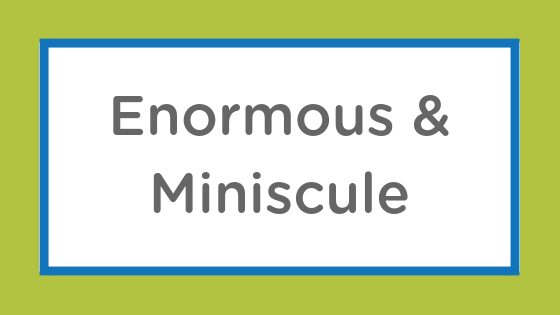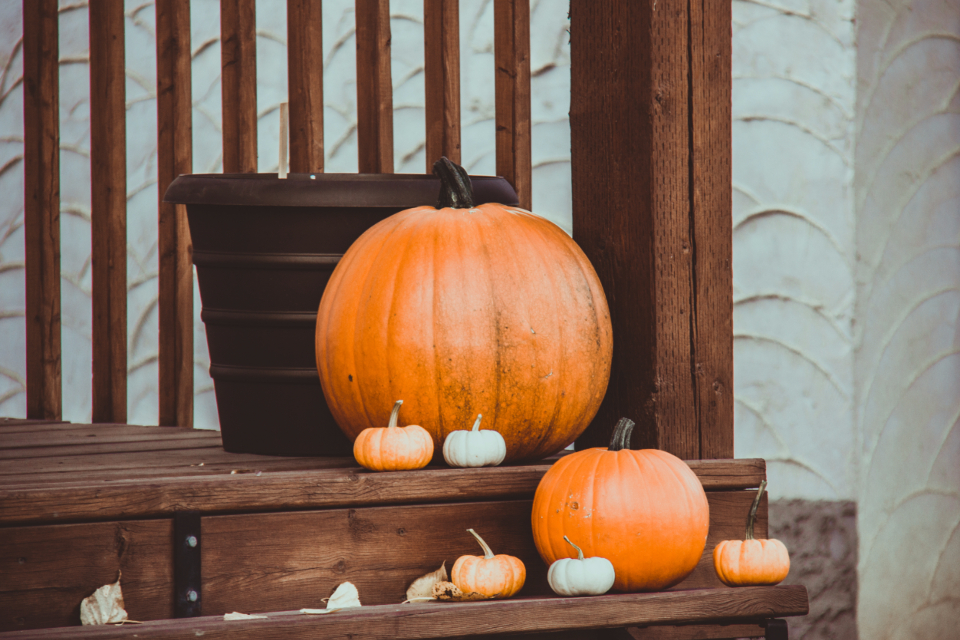Size is a way that children can categorize and sort items. Sorting items into different categories like “big” and “small” is a pre-math skill that helps them observe and compare the world around them. Expand on “big” and “small” by introducing the words of the week. Help your child find things that fit each category: Minuscule, small, big, and enormous.
Definitions
Minuscule – Very, very small
Enormous – Very, very big
Recommended reading this week
The Mitten by Jan Brett
Tiny & Hercules by Amy Schwartz
Tiny Tortilla by Arlene Williams
My Humongous Hamster by Lorna Freytag
Measure!
Cut strips of paper (or you can find a calculator paper roll for .99 at an office supply store). Tape the strips to the wall and using a measuring tape and marker, jot down a young child’s height. Then measure an older person’s height. Compare the height of an adult to the height of a child. The adult is the “bigger” or “enormous” one and the child is the “minuscule” or “very small” measurement.
Trace!
Secure a large piece of paper onto the floor or on the wall (you can tear open a large paper bag). Using a dark crayon or marker, trace a young child, then trace an older person. Cut the shapes and place them next to each other. Compare how a cut out of a child looks minuscule in the presence of the adult cut out, which looks enormous
Go Outside
Take a walk with your child and explore minuscule and enormous objects in your environment. You can ask questions like “why do you think that tree is so enormous?” or “How do you think being minuscule helps that bug?”
Classify Objects
Using pictures from magazines or objects you have around the house, help your child classify objects as “enormous” or “minuscule.” For example, an elephant is “enormous” and an ant is “minuscule.”
En Español
El tamaño es una manera en la que niños pueden clasificar y ordenar cosas. La clasificación de cosas en grupos diferentes, como “grande” y “pequeño,” es una base de las matemáticas. Ayude a aumentar el vocabulario relacionado con tamaño con las palabras de la semana. Ayude a su niño a encontrar cosas en estas categorías: diminuto, pequeño, grande, y enorme.
Definitions
Diminuto – muy, muy pequeño.
Enorme – muy, muy grande.
Lecturas recomendadas esta semana
The Mitten de Jan Brett
Tiny & Hercules de Amy Schwartz
Tiny Tortilla de Arlene Williams
My Humongous Hamster de Lorna Freytag
Tome medidas con su niño
Corte una hoja de papel en tiras. Pegue las tiras en la pared con cinta y anote la altura de su niño. Puede usar una cinta métrica para medir la altura específica si quiere. Haga lo mismo con un adulto también. Compare la altura del adulto y el niño. Hable con su niño sobre los tamaños diferentes y compare las alturas. Pregúntele cuál es enorme y cuál es diminuto.
Trace con su niño
Pegue una hoja de papel grande en el piso o la pared. Use un marcador para trazar el contorno de su niño y después trace el contorno de un adulto. Corte las formas y póngalas lado a lado. Compare los dibujos del niño y adulto. Pregunte: ¿Cuál es pequeño? ¿Cuál es grande? ¿Cuál es diminuta en comparación con la otra?
Vaya afuera
Camine afuera con su niño y explore objetos diminutos y enormes en la naturaleza. Haga preguntas como, “¿Por qué piensas que este árbol es enorme? o “¿Por qué es bueno para un insecto ser diminuto?
Clasifique objetos
Use fotos de una revista u objetos en su casa para ayudar a su niño a clasificacar. Ayude a su niño a identificar objetos “enorme” y “diminuto.” Por ejemplo, un elefante es enorme y una hormiga es diminuta


